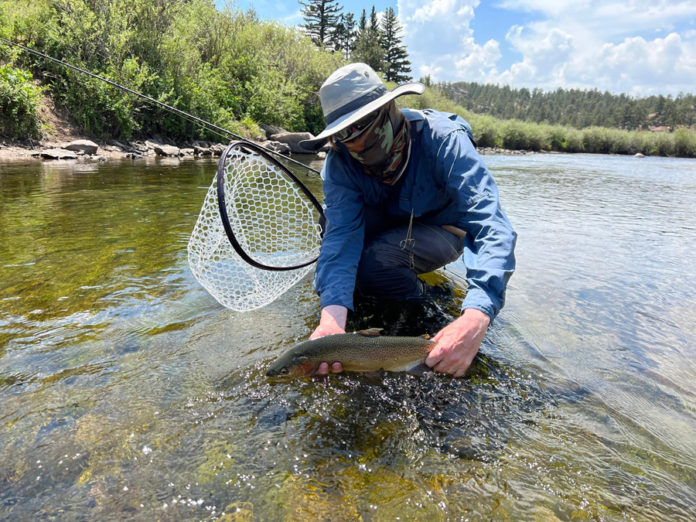Written by: Evan Jones
Photo courtesy Evan Jones
Ever since moving back home to the Front Range of Colorado, I’ve been re-learning just how selective and “technical” some trout can become under constant fishing pressure. Their ability to pick out minute details is downright uncanny, even when you’ve achieved a drag-free drift. Some trout are so good at ignoring flies, anglers can get the impression they’re only looking for one very specific thing which must be matched exactly in order to catch fish.
In my experience, however, it’s more likely that overly-picky trout have simply learned to focus on a few specific aspects of flies that help them to identify fakes from a mile away.
Figuring out which aspect(s) of your fly the trout are recognizing and rejecting can be tricky, especially since it can vary so much by location or seasonal timing, so using a consistent and replicable approach is important. In order to stay organized, I came up with a two-step system that I call the Elimination Diet, which has been remarkably effective. Here’s how it works:

Photo courtesy Evan Jones
Step 1: Strip It Down
The first step is to distill your fly down to the bare essentials by removing beads, flash, wing cases, tails, legs, and all other “extras” that trout might be noticing and avoiding. The resulting “fly” is now just thread wrapped around a hook. (I add a black head with a marker, and seal the thread with clear nail polish.) This plain, slim pattern may not be the most accurate insect imitation, but at least it won’t raise any suspicions. Try these stripped-down patterns in the same colors and sizes as the flies that were rejected, and see if the reaction is different.
If you still don’t catch trout, then fly design might not be the issue, and the Elimination Diet might not be the solution.
However, if you do catch trout with the basic thread fly, then there’s something about the more complex flies you were using earlier that the fish have apparently learned to avoid. Time for step 2.

Step 2: Build It Better
If you caught fish on the plain thread midge, you can start reintroducing design elements, one at a time, to test whether each one makes the fly more or less effective. So far, I’ve noticed that wing cases and tails rarely lead to fewer strikes, while flash is the cause of the most refusals, followed closely by brass bead heads. Your mileage may vary, but by testing each fly design element individually, you’ll come to understand exactly what the fish in your area will tolerate, and maybe even what they prefer.
Evan Jones is the assistant editor of the Orvis Fly Fishing blog. He lives in Colorado.
Credit: Source link































